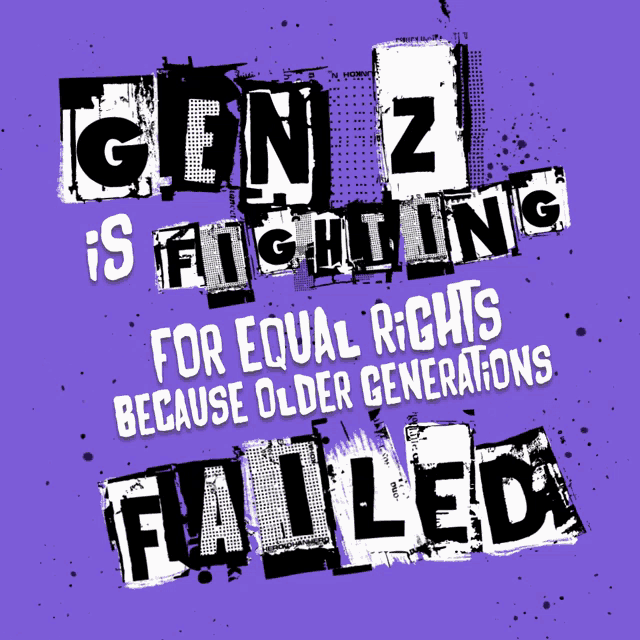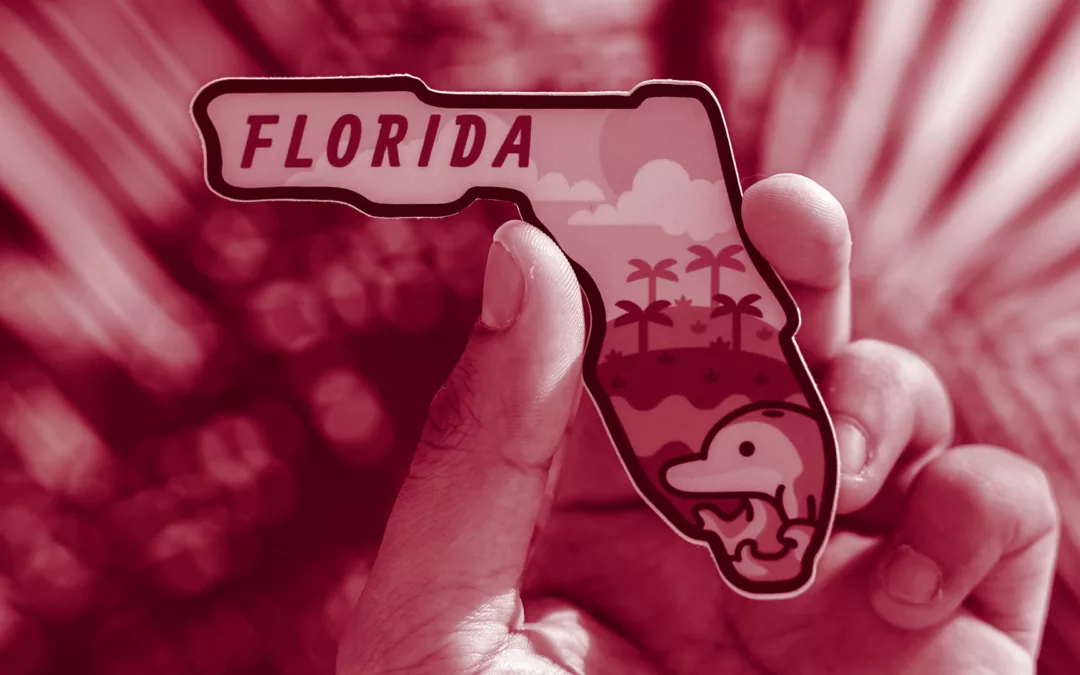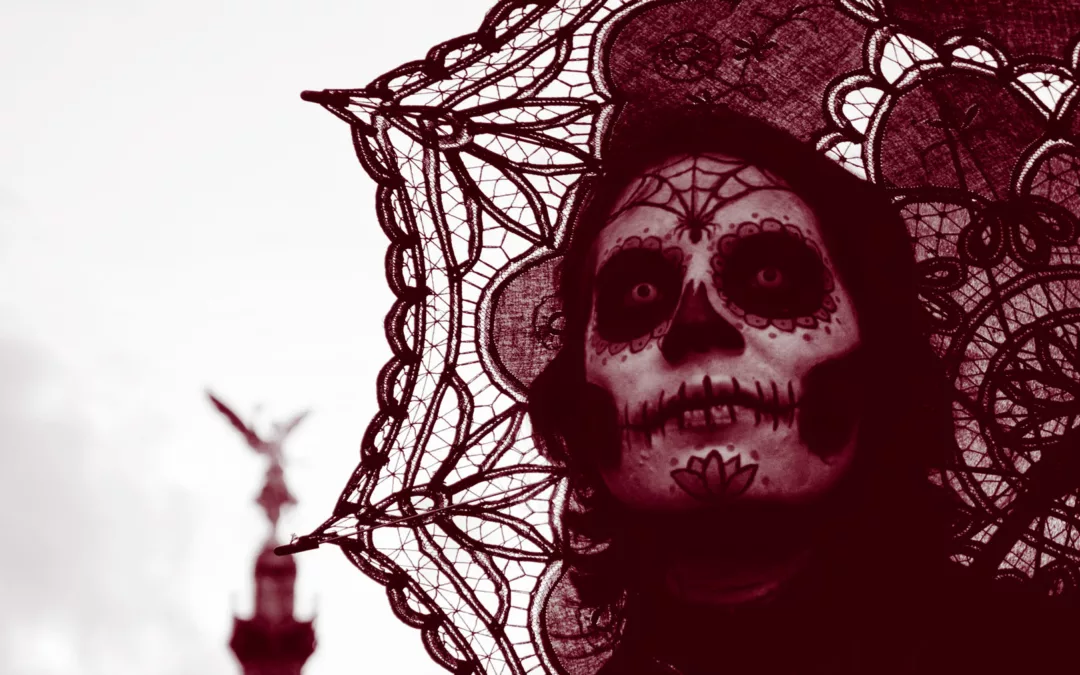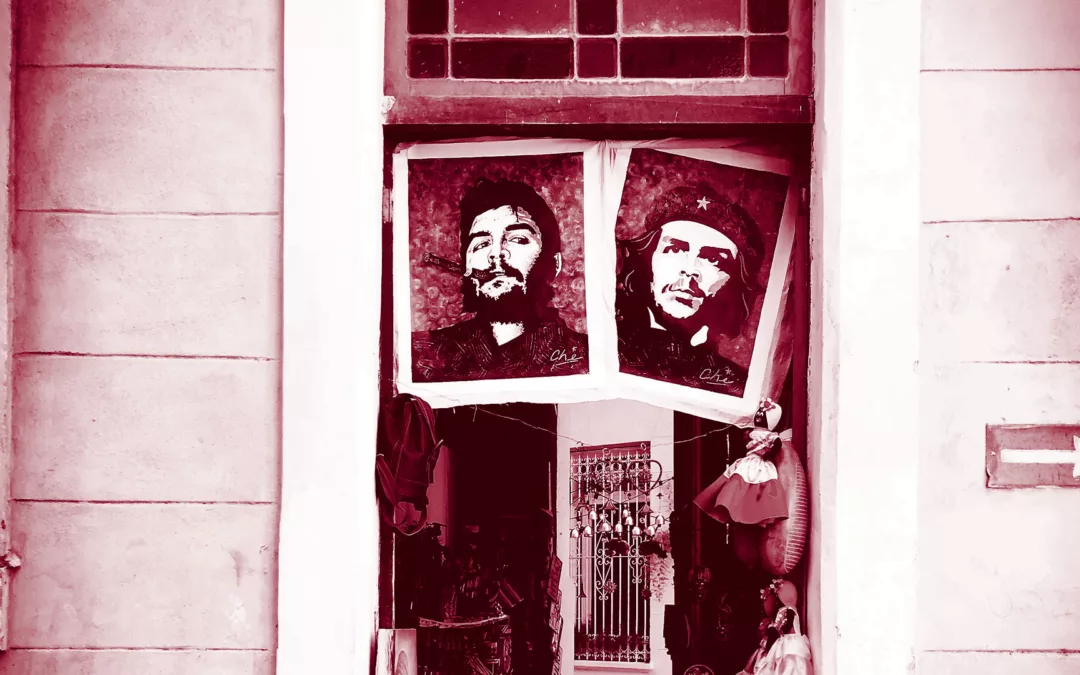
Hispanic fashion icons & trends captivating Gen Z.
The road to Gen Z.
The world of fashion is a dynamic landscape that often serves as a reflection of societal trends, values, and individual self-expression. In recent years, the evolution of Hispanic fashion icons has brought about a transformative shift in American media. From iconic designers to influential celebrities, the Hispanic community has left an indelible mark on the fashion industry, resonating particularly with the Gen Z demographic.
Today, we delve into the controversial yet captivating journey of Hispanic fashion icons, exploring their influence on American media and offering examples that marketers can leverage to connect with the Gen Z Hispanic audience.
Historical Underrepresentation
Historically, the American fashion industry has struggled with inclusivity and representation, with minority voices frequently silenced or ignored. The Hispanic community, despite its rich cultural tapestry, has faced underrepresentation and cultural appropriation in mainstream media. However, a new era is dawning, as Gen Z disrupts the status quo by demanding authenticity and diversity.
Historical Background of Gaucho Pants
Gaucho pants trace their origins to the heart of Latin America, specifically with the cowherds of Argentina known as gauchos. Emerging in the mid-18th century, these distinctive trousers were practical attire for life on the range. Designed with wide legs and an oversized crotch, gaucho pants provided comfort and freedom of movement for cowherds who spent long hours on horseback.
Modeled after knee-length trousers similar to culottes, these pants were cropped just below the knee. This design was not just for style but served a functional purpose. The loose fit and extra fabric allowed for ease of sitting in the saddle, making long rides across the pampas more bearable.
Today, the influence of the traditional gaucho pant has transcended its utilitarian roots. Modern iterations often feature faux leather materials and can be found in women’s business attire, frequently styled with strappy heels and oversized blazers. This fusion of historical practicality and contemporary fashion underscores the enduring legacy of gowns within the context of clothing evolution.
Icons Leading the Way
Oscar de la Renta: A pioneer in the fashion industry, de la Renta hails from the Dominican Republic. He revolutionized American fashion with his impeccable designs, showcasing a fusion of Latin elegance and Western aesthetics. His influence has transcended generations, as his brand continues to resonate with Gen Z fashion enthusiasts.
Jennifer Lopez: An undeniable force in the entertainment and fashion worlds, Lopez has redefined red carpet glamour. Her ability to seamlessly blend street style with high fashion has garnered her recognition as a trendsetter. From her iconic Versace jungle-print dress to her streetwear-inspired ensembles, Lopez epitomizes the duality of the Hispanic-American experience.
Balmain x Bad Bunny Collaboration: The collaboration between luxury brand Balmain and Puerto Rican trap artist Bad Bunny showcased the potential for cross-pollination between fashion and music. The collection’s fusion of urban streetwear and high-end couture drew attention to the influence of Hispanic culture on fashion trends.
The Origin of the Panama Hat
The Panama hat, a timeless accessory renowned for its elegance, actually originates from Ecuador, not Panama. These iconic hats are traditionally crafted from toquilla straw, meticulously woven by skilled Ecuadorian artisans.
Why It’s Called a Panama Hat
The confusion surrounding the hat’s name arises from historical trade routes. In the 19th century, Panama was a bustling commerce hub where these Ecuadorian hats were commonly sold. Workers on the Panama Canal also popularized them, leading many to associate the hats with Panama instead of their true origin.
Variations Across Regions
Over time, the art of weaving these hats spread across South America and even into Mexico. For example, in Mexico, the jipijapa hat is a popular variation made from local straw. This regional diversification has enriched the cultural tapestry of this classic accessory, making it a beloved staple worldwide.
By understanding its rich history and origin, we truly appreciate why the Panama hat remains a cherished fashion icon.
The Cultural Significance of Ruffles in Latin American Fashion
Ruffles are more than just a fashion statement in Latin American cultures; they carry deep cultural significance. Historically, these intricate fabric details have been linked to the Southern gentlewoman aesthetic, embodying class and perhaps a touch of nostalgia. However, contemporary fashion designers have reimagined ruffles to resonate with modern sensibilities, making them ultra-feminine and red-carpet-ready.
Traditional Garments
Ruffles are a defining feature in many traditional Latin American garments. For instance:
- Pollera: A long, layered skirt often finished with ruffles at the hem.
- Salsa Dresses: Vibrant, flowing dresses are perfect for the energetic dance form.
- Flamenco Dresses: Though originally from Spain, these ruffle-laden dresses are deeply indicative of Latin America’s colonial history and cultural blend.
Modern Interpretations
Today’s designers, including numerous acclaimed Latin American fashion icons, continue to draw on this rich heritage. They use ruffles in avant-garde ways, such as macro-ruffles and tulle ruffle details, to create striking, feminine silhouettes that capture global attention.
Ruffles in Latin American fashion are more than decorative elements—they are a symbol of cultural identity and history. From traditional wear to modern designer collections, they embody a blend of heritage and contemporary style, making them a timeless feature in the fashion landscape.

The Origin and Design of the Carriel Bag
The Carriel bag traces its roots back to the lush, coffee-producing valleys of Colombia, specifically in regions like Antioquia. This unique bag emerged out of necessity among the muleteers, known locally as arrieros. These arrieros embarked on arduous journeys through the rugged Andes Mountains to reach the fertile areas ideal for coffee cultivation.
Practical and Efficient Design
The design of the Carriel bag is both innovative and practical. It features accordion-like folds that allow it to expand, providing ample storage without becoming bulky or cumbersome. This clever design enabled arrieros to carry all their essential belongings while retaining mobility and lightness.
Key Features
- Accordion Folds: Expandable storage allows for greater carrying capacity.
- Top Flap: Offers protection for the contents while ensuring quick access.
- Hands-Free Carrying: Designed to be worn across the body, keeping the user’s hands free for other tasks.
The Carriel bag originally served as a vital tool for muleteers, who needed to carry personal items, medicines, and religious artifacts across long and challenging treks. By keeping their hands free, the arrieros could more easily manage their mules and navigate the difficult Andean terrain.
Today, the Carriel bag has transcended its utilitarian origins to become a cherished cultural symbol and a fashionable accessory, appreciated for both its historical significance and timeless design.
The Historical Use of the Carriel Bag in Colombia
The Carriel bag played a pivotal role in Colombian history, particularly among the arrieros (muleteers) traversing the Andean mountains. Originally designed for practicality, these bags featured accordion-like folds and a top flap, enabling users to carry an array of items without adding excessive weight or compromising mobility.
Origins in the Coffee Valleys
The Carriel bag, known in local terms as a guarniel, emerged from the coffee-producing valleys of Colombia, such as Antioquia. These regions were characterized by their ideal coffee-growing conditions, but accessing them required long and arduous journeys over challenging terrain.
Essential for Muleteers
Muleteers relied heavily on Carriel bags during their travels. The bags were indispensable for carrying personal belongings, including:
- Medicine: Necessary for treating ailments on the go.
- Religious Artifacts: Objects of spiritual significance to the wearer.
- Miscellaneous Items: Tools, food, and other essentials for survival.
Hands-Free Convenience
The design of the Carriel allowed arrieros to keep their hands free, which was crucial while managing mules and navigating rugged landscapes. This hands-free convenience made the Carriel an essential tool for surviving extended journeys through the Andes.
In summary, the Carriel bag was a versatile and practical accessory for Colombian muleteers, embodying both cultural significance and utilitarian benefits.
The Gen Z influence
Gen Z, known for its digital prowess and commitment to social justice, is at the forefront of driving change in the fashion industry. This demographic demands representation, inclusivity, and authenticity from brands, urging marketers to rethink their strategies.
Social media and the rise of influencers
The emergence of social media platforms has democratized fashion, allowing individuals to become influencers and trendsetters in their own right. Hispanic Gen Z influencers like Lele Pons and Alex Costa have gained massive followings, connecting with audiences through their unique style and cultural pride.
Celebrating identity and hybrid styles
Gen Z Hispanics are embracing their cultural heritage while navigating the complexities of their American identity. This has given rise to a hybrid fashion aesthetic that fuses traditional elements with contemporary trends. Brands that understand and celebrate this duality can resonate deeply with this audience.
What Variations of the Panama Hat Exist Across Latin America?
The classic Panama hat, traditionally made from toquilla straw in Ecuador, has inspired numerous variations throughout Latin America. These adaptations utilize abundant local materials and reflect the unique cultural influences of each region.
Variations Across South America:
- Jipijapa Hat (Mexico): A prominent variation, the jipijapa hat, hails from Mexico. This style uses jipijapa palm fibers, renowned for their fine weave and durability.
- Montecristi Hat (Ecuador): Famously originating from Montecristi, Ecuador, these hats are known for their finely woven texture and exceptional quality, often considered the gold standard of Panama hats.
- Cuenca Hat (Ecuador): Another Ecuadorian variant, the Cuenca hat, features a slightly coarser weave but offers a more affordable option while maintaining the classic aesthetic.
Variations Across Central America:
- Panama Hat (Panama): Despite its name, Panama was crucial in popularizing the hat in the 19th century due to its status as a major commercial hub.
- Colombian Aguadeño Hat (Colombia): This version from Colombia uses locally-sourced materials and often incorporates a wider brim, designed to provide extra protection from the sun.
These regional variations not only showcase the versatility of the Panama hat but also highlight the rich artisanal traditions and diverse cultures across Latin America. Each hat tells a story of its origin, offering both style and functionality.
How Are Gaucho Pants Styled in Contemporary Fashion?
Gaucho pants have made a remarkable comeback in today’s fashion landscape. These versatile, wide-legged trousers are not just for casual settings anymore; they’re being styled in chic, modern ways that suit a variety of occasions.
Office-Ready Look
For the professional woman, gaucho pants can be seamlessly integrated into a work wardrobe. Pair them with an oversized blazer and a crisp, tailored blouse. Strappy heels add a touch of elegance, balancing the relaxed fit of the gaucho pants with a sophisticated edge.
Casual Chic
On weekends or for more laid-back settings, gaucho pants can be dressed down without losing any style points. Team them with a fitted tee or a crop top for a relaxed vibe. Slip on some comfortable sneakers or flats to complete this effortless, yet trendy look.
Evening Glam
Yes, you can even wear gaucho pants for a night out. Choose a pair in luxe fabrics like satin or faux leather. Add a statement top—perhaps something sequined or with intricate detailing. Finish the ensemble with high-heeled sandals and bold accessories to capture everyone’s attention.
Styling Tips
- Layers: Layering with gaucho pants can add depth to your outfit. Consider a long trench coat or a short, fitted jacket depending on the look you’re going for.
- Accessories: Don’t forget the accessories. A chunky necklace or an elegant watch can significantly elevate your style.
- Proportions: Keep an eye on proportions. Since gaucho pants are wide-legged, pairing them with more fitted tops tends to create a balanced silhouette.
From professional settings to casual hangouts and evening events, gaucho pants offer a versatile wardrobe option that’s both fashionable and functional.
Navigating controversy
The intersection of culture, identity, and fashion can sometimes give rise to controversy. Brands looking to tap into the Gen Z Hispanic demographic must approach their marketing strategies with cultural sensitivity, avoiding appropriation or tokenization. Authenticity is key, and involving Hispanic voices in the creative process is crucial to crafting respectful and appealing campaigns.
How is the Bolero Jacket Styled in Modern Fashion?
The bolero jacket has evolved significantly from its Spanish origins, where it drew inspiration from matador costumes and traditional dance attire.
Versatility in Modern Wardrobes
Today, the bolero jacket is a versatile piece in contemporary fashion, often seen in ultra-cropped, ribbed designs made from soft, comfortable knits. This modern iteration pairs effortlessly with various outfits, adding a chic touch without overwhelming the look.
Styling Tips:
-
Casual Layering: For a relaxed vibe, layer a soft knit bolero over a simple tank top or tee. This combination works well with high-waisted jeans or skirts, offering both comfort and style.
-
Elegant Evening Wear: For a more formal occasion, choose a sleek bolero in luxurious fabric like satin or velvet. This can be draped over a cocktail dress or a sleek jumpsuit, adding sophistication while keeping the look modern.
-
Street Style Edge: Boleros in bold colors or patterns can add a street style flair. Pair them with graphic tees, leather pants, or distressed denim to make a fashion-forward statement.
Popular Trends:
-
Ribbed Knits: These provide a fitted silhouette that complements various body types, making them a favorite for casual and semi-formal outfits.
-
Embellished Designs: Boleros adorned with sequins, embroidery, or beads bring a touch of glam to any ensemble, ideal for parties and special events.
-
Open-front Styles: These offer a relaxed, easygoing appearance, perfect for layering over flowy dresses or blouses for a balanced look.
The bolero jacket in modern fashion serves as both a functional and stylish piece. Its adaptability ensures it’s a suitable addition to any wardrobe, effortlessly transitioning between casual and elegant settings.
The History and Origin of the Bolero Jacket
The Bolero jacket traces its roots back to Spain, where it was initially inspired by the flamboyant costumes of matadors, known as chaquetillas. These short, fitted jackets were not just a functional part of a bullfighter’s ensemble but also a statement piece reflecting the vibrant culture and intense drama of the bullring.
In addition to its association with bullfighting, the Bolero jacket shares its name with a traditional Spanish dance from the 18th century, underscoring its cultural significance. The dance, characterized by its lively and rhythmic movements, influenced the jacket’s design, lending it an air of elegance and vivacity.
When Spaniards colonized parts of South and Central America, the Bolero jacket’s influence spread across these regions. It evolved into a cardigan-like top often fastened with a string and worn over a dress, blending with local fashion and customs.
Today, the Bolero jacket has transformed into a modern wardrobe staple. The contemporary versions are often ultra-cropped, ribbed, and crafted from soft knits, offering a nod to their historic origins while fitting seamlessly into today’s fashion.

Breaking into the Gen Z Hispanic market.
Collaborative Campaigns: Collaborate with Hispanic designers, artists, and influencers to co-create campaigns that authentically represent the community’s values and aesthetics.
Cultural Storytelling: Use storytelling to connect with Gen Z Hispanics on a deeper level. Highlight the journey of Hispanic fashion icons and how their experiences have shaped their fashion choices.
Sustainable and Inclusive Fashion: Embrace sustainability and inclusivity in your brand’s ethos. Gen Z Hispanics are more likely to support brands that align with their values.
Eco-Friendly Clothing Materials for a More Organic Wardrobe
Are you looking to make your wardrobe more sustainable? Here are some eco-friendly clothing materials that can help you achieve a greener and more organic closet:
1. Organic Cotton
Organic cotton is grown without harmful pesticides and synthetic fertilizers. It’s gentle on your skin and the environment.
2. Hemp
Hemp is a versatile and durable fabric. It requires minimal water and pesticides to grow, making it an excellent sustainable choice.
3. Bamboo
Bamboo is a fast-growing plant that regenerates quickly. When processed responsibly, it can be turned into a soft, breathable fabric.
4. Recycled Polyester
Made from recycled plastic bottles, recycled polyester helps reduce waste and the need for virgin materials. It’s a great option for activewear.
5. Tencel (Lyocell)
Derived from sustainable wood sources, Tencel is renowned for its softness and strength. It’s biodegradable and produced in an eco-friendly closed-loop process.
6. Linen
Linen, made from flax plants, requires fewer resources to produce. It’s long-lasting and gets better with each wash, making it a timeless addition to your wardrobe.
7. Cork Fabric
Cork fabric is created from the bark of cork oak trees. It’s a vegan-friendly alternative to leather, durable, and easy to clean.
8. Silk
When sourced responsibly, silk is a natural fiber that is renewable and biodegradable. Look for peace or Ahimsa silk, which is harvested without harming the silkworms.
9. Organic Wool
Organic wool comes from sheep raised in humane conditions without synthetic chemicals. It provides natural insulation and is highly durable.
10. Piñatex
Piñatex is an innovative fabric made from pineapple leaf fibers. It’s a sustainable alternative to leather and helps reduce agricultural waste.
Making the shift to an eco-friendly wardrobe is a meaningful step towards sustainability. These materials not only provide comfort and style but also support a healthier planet.
Cultural Competence Training: Provide cultural competence training to your marketing team to ensure they understand the nuances of Hispanic culture and avoid inadvertent missteps.
The evolution of Hispanic fashion icons has catalyzed a transformative shift in American media, challenging norms and demanding authentic representation. Gen Z, with its passion for inclusivity and cultural pride, is a force to be reckoned with. Marketers looking to break into this demographic must recognize the influence of Hispanic fashion icons, approach campaigns with cultural sensitivity, and celebrate the hybrid identity of Gen Z Hispanics. By doing so, brands can forge meaningful connections that resonate beyond trends, fostering loyalty and longevity in this dynamic and influential market.






Recent Comments